accelerated depreciation
description: accounting method for faster asset cost write-off
33 results
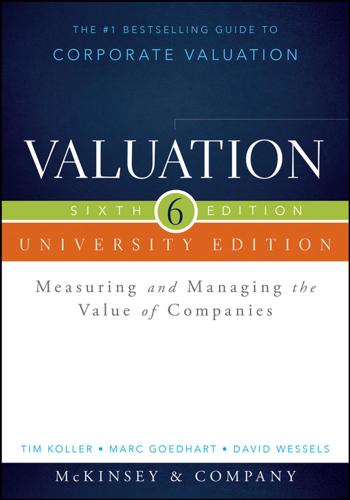
Valuation: Measuring and Managing the Value of Companies
by
Tim Koller
,
McKinsey
,
Company Inc.
,
Marc Goedhart
,
David Wessels
,
Barbara Schwimmer
and
Franziska Manoury
Published 16 Aug 2015
With regard to warranty reserves, accrual-based taxes typically understate the actual cash taxes paid. 2. Accelerated depreciation (a DTL): The company uses straight-line depreciation for its U.S. Generally Accepted Accounting Principles/International Financial Reporting Standards (GAAP/IFRS) reported statements and accelerated depreciation for its tax returns (because larger depreciation expenses lead to lower pretax income and hence smaller taxes). For a growing company, accelerated depreciation is typically larger than straight-line depreciation, so accrual-based taxes typically overstate the actual cash taxes paid.
…
For instance, the government typically uses accelerated depreciation to determine a company’s taxes, whereas the accounting statements are prepared using straightline depreciation. This leads to cash taxes that are lower than reported taxes during the early years of an asset’s life. For growing companies, this difference will cause reported taxes consistently to overstate the company’s actual tax payments. To avoid this bias, use cash-based (versus accrual) taxes to determine NOPLAT. Since reported taxes will now match cash taxes, the deferred-tax account—in this case related to accelerated depreciation—is no longer necessary.
…
The transaction may create value if the company wants the ability to stop using the asset before its remaining life expires and wants to eliminate the risk that the value of the asset will be lower when it decides to stop using the asset. Sale-leaseback transactions may also create value if the lessor is better able to use the tax benefits associated with owning the asset, such as accelerated depreciation. This does not violate the conservation of value principle, because the total cash flows to the companies involved have increased (at the expense of the government). RISK AND VALUE CREATION A company’s future cash flows are unknown and therefore risky, so to complete our discussion of value creation, it is necessary to explain how risk affects value.
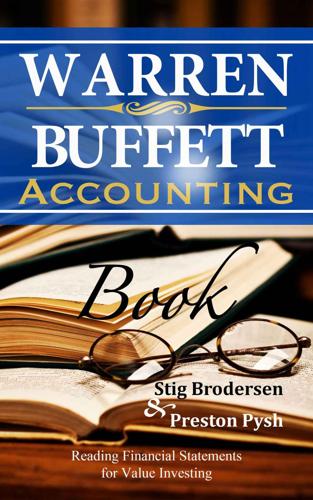
Warren Buffett Accounting Book: Reading Financial Statements for Value Investing (Warren Buffett's 3 Favorite Books)
by
Stig Brodersen
and
Preston Pysh
Published 30 Apr 2014
Now, tax laws allow you to use a thing called accelerated depreciation in order to represent the actual depreciation more accurately. This may result in a steeper depreciation early on, but a more gradual depreciation later in the item’s lifecycle. So, from an accelerated depreciation standpoint, let’s say that Coca-Cola can write off 25% of the previous year’s value. That means the first year’s tax expense would be $2,500 ($10,000*25%), but the second year’s would be $1,875 ($7,500 * 25%), and so on. A deferred tax occurs when there is a difference between the linear and accelerated depreciation approach. Looking at the figure below, you can see the accounting value on the first row (linear depreciation) and the tax value on the second row (accelerated depreciation).
…
Looking at the figure below, you can see the accounting value on the first row (linear depreciation) and the tax value on the second row (accelerated depreciation). The difference between the two values is on the third row. In order to calculate the deferred tax, you multiply the differences by the corresponding tax bracket the company is in for that particular year. For the example below, I assumed the company was in a 35% tax structure for all the years. Purchase Year 1 Year 2 Year 3 Accounting Value 10,000 8,000 6,000 4,000 Tax Value 10,000 7,500 5,625 4,219 Taxable Difference - 500 375 (219) Deferred Tax Liability @ 35% - 175 131 (77) So what does all this mean?

Stacy Mitchell
by
Big-Box Swindle The True Cost of Mega-Retailers
and
the Fight for America's Independent Businesses (2006)
Over the next twenty years, eighteen thousand shopping centers and malls were built in the United States.7 According to historian Thomas Hanchett, the eƒect of the tax code change becomes readily apparent by comparing the rates of shopping center construction in the United States and Canada, which did not adopt accelerated depreciation. In the mid-1950s, the two countries had about the CHAIN STORE WORLD 7 same number of shopping centers per capita. A decade later, the United States had twice as many. There were other consequences as well. “Structures built under accelerated depreciation were intended to be disposable,” noted Hanchett. “You reaped the tax break as long as the law allowed, usually seven to fifteen years, then unloaded the project. So builders got out of the habit of building for the ages.” Because accelerated depreciation was available only for new construction, not renovation, downtown businesses and property owners could not take advantage of the new tax shelter.
…
On election day, Lowe’s won its subsidy by a margin of just ninety-four votes—2,212 to 2,118.3 The reigning assumption is that mega-retailers have attained their market dominance solely because of consumer choices. But corporate chains have been aided and abetted in no small part by public policy. Federal, state, and local policies have created an uneven playing field. It began in the late 1950s with accelerated depreciation, which fueled the explosion of shopping malls, and picked up speed in the 1980s and 1990s, as policymakers funneled billions of dollars in development subsidies to big retail chains, opened up tax loopholes that gave large retailers a decided edge over local competitors, and failed to adequately police abuses of market power.
…
Rebecca Wiswell, interview, Feb. 20, 2006; Ken Bothman, interview, Feb. 15, 2006; Robinson interview. 68. Long interview; Robinson interview. 69. Merrian Fuller, BALLE’s managing coordinator, interview, Feb. 20, 2006; Betsy Burton, interview, Nov. 15, 2006. 70. Robinson interview; Milchen interview. INDEX Abramoƒ, Sergio, 243 accelerated depreciation, 6–7 Ace Hardware cooperative, 33, 163, 224–25, 246–47 Act 250 (Vermont), 220–21 aƒordable space for local start-ups, 231–34 age discrimination by big-box retailers, 58 agribusiness vs. family farms, 46–49, 73–74, 75–76 AIBA (Austin Independent Business Alliance), xi, 241–43, 250–53 Aiken, Paul, 143–44 AIMS (Alliance of Independent Media Stores), 243–44 air pollution, 106, 114–15, 116 Alabama: Birmingham, 167 Alaska: Homer, 214 Algonquin Books, 143 Allen, Bob, 30 Alliance of Independent Media Stores (AIMS), 243–44 Alliances, Independent Businesses, x–xi, 17, 29, 243–50, 255–58 Alves, Steve, 238, 239 Amazon.com, 12, 140, 153, 176, 177 American Booksellers Association, 141, 185–87, 226, 249 American Independent Business Alliance (AMIBA), 253–54, 258 American Retail Federation, 209 American Specialty Toy Retailing Association, 56 America Unchained, 254 AMIBA (American Independent Business Alliance), 253–54, 258 Anderson, Chris, 151 Anderson, Eric, 127, 128, 129 Antall, Robert, 120 Antitrust Modernization Commission, 188–89 antitrust policy, 17, 177–90 A&P (Great Atlantic & Pacific Tea Company), 3, 205–6, 209 appliance retailing, 132, 247 Arizona: Flagstaƒ, 202; Phoenix, 169; Tempe, 31 Arkansas: Bentonville, 26–27; Faulkner County, 180–81 Austin Independent Business Alliance (AIBA), xi, 241–43, 250–53 authors, reliance on independent bookstores, 140–43 automobiles.

Rewriting the Rules of the European Economy: An Agenda for Growth and Shared Prosperity
by
Joseph E. Stiglitz
Published 28 Jan 2020
All EU countries make interest expenses tax deductible.11 The marginal cost of finance for these firms is reduced by the tax deduction by exactly the same amount that the return to capital is reduced.¶ Thus, there is no effect on investment. Things get more complicated once one introduces accelerated depreciation allowances. The whole point of accelerated depreciation is to reduce the cost of capital to below what it would be with the actual depreciation of assets. The value of these accelerated depreciation allowances increases as the tax rate increases. Therefore, the higher the tax rate, the higher the level of investment.12 On the other hand, for firms that invest their retained earnings but no more, an increase in their tax adversely affects investment rate by diminishing the amount they have to reinvest.# And for the few firms that turn to equity markets to finance their marginal investments, higher corporate taxation is also likely to discourage investment.** Empirically, the net effect of an increase in the corporation tax on investment seems to be at most small, particularly if one takes into account the benefits that the corporation may receive from public expenditures, such as improved infrastructure and education.
…
. ** A full analysis requires integrating the impacts of the personal and corporate income tax. Equity financing leads to dilution, which lowers stock market values and leads to a capital loss or at least a capital gain that is lower than it otherwise would be. If there is a capital gains tax, the savings on that tax, plus the benefits of accelerated depreciation, partially offset the burden of the corporation tax and diminish the adverse effect of the tax on investment. †† Tax evasion is not paying taxes that are legally due. Tax avoidance is taking advantage of existing loopholes and creating new ones to lower one’s taxes, all in ways that are within the law.
…
Stiglitz, USA Frank Vandenbroucke, Professor, Free University of Amsterdam, Netherlands Andrew Salomone Viteritti, Managing Editor, The Economist Intelligence Unit, USA Kristian Weise, Director, CEVEA, Denmark Stuart Wood, Member of the House of Lords, UK INDEX Page numbers listed correspond to the print edition of this book. You can use your device’s search function to locate particular terms in the text. Page numbers in italics refer to charts. accelerated depreciation allowances, 194 activation of labor force, 273 active labor market programs, 273 Africa, 315 aggregate demand cycle of, 58 decrease in, 40–41, 44–46 inequality growth and, 46–48 as spillover issue, 58 stimulating, 60–61 structural policies and, 69 Airbnb, 269 alcohol and tobacco taxes, 200–201 Amazon, 15–16, 129, 131–32 antitrust issues, 131, 132, 134, 135, 326–27 Apple, as tax avoider, 195, 197 artificial intelligence (AI), 298 asset management industry, 169–70 asymmetric shocks, 76 austerity alternatives to, 24, 53–55 breaking from, 50 endangering social protection, 246–47 expansionary austerity, 42 health care weakened by, 242 impacting too-low public investment, 101–6 in 2008 crisis aftermath, 35–37 unemployment, as adverse effect of, 49–50 Austerity Doctrine, 17 balanced budget multiplier, 52–53 banking sector.
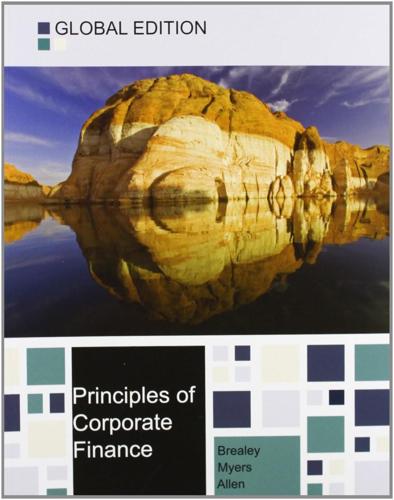
Principles of Corporate Finance
by
Richard A. Brealey
,
Stewart C. Myers
and
Franklin Allen
Published 15 Feb 2014
A Final Comment on Taxes All large U.S. corporations keep two separate sets of books, one for stockholders and one for the Internal Revenue Service. It is common to use straight-line depreciation on the stockholder books and accelerated depreciation on the tax books. The IRS doesn’t object to this, and it makes the firm’s reported earnings higher than if accelerated depreciation were used everywhere. There are many other differences between tax books and shareholder books.7 The financial analyst must be careful to remember which set of books he or she is looking at. In capital budgeting only the tax books are relevant, but to an outside analyst only the shareholder books are available.
…
If so, cash flow from operations would be defined before interest, that is, as net income plus interest plus depreciation. 7There is a potential complication here, for the depreciation figure shown in the company’s report to shareholders is rarely the same as the depreciation figure used to calculate tax. The reason is that firms can minimize their current tax payments by using accelerated depreciation when computing their taxable income. As a result, the shareholder books (which generally use straight-line depreciation) overstate the firm’s current tax liability. Accelerated depreciation does not eliminate taxes; it only delays them. Since the ultimate liability has to be recognized, the additional taxes that will need to be paid are shown on the balance sheet as a deferred tax liability.
…
It provides an annual tax shield equal to the product of depreciation and the marginal tax rate: The present value of the tax shields ($554,000 for six years) is $1,842,000 at a 20% discount rate. Now if IM&C could just get those tax shields sooner, they would be worth more, right? Fortunately tax law allows corporations to do just that: It allows accelerated depreciation. BEYOND THE PAGE ● ● ● ● ● MACRS classes brealey.mhhe.com/c06 The current rules for tax depreciation in the United States were set by the Tax Reform Act of 1986, which established a Modified Accelerated Cost Recovery System (MACRS). Table 6.4 summarizes the tax depreciation schedules.
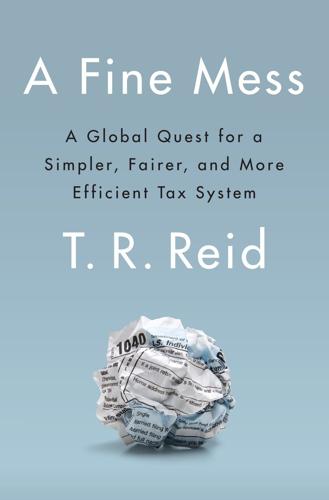
A Fine Mess
by
T. R. Reid
Published 13 Mar 2017
Despite the predictable efforts of various industry and interest groups to wedge their favorite tax preferences back into the tax code, New Zealand clung fairly tightly to the BBLR principle over the next two decades. Over time, though, some deductions and credits were permitted—including that accelerated depreciation write-off that Graham Scott thought he had killed. All this narrowed the tax base and forced the government to raise income tax rates; the top income tax rate had risen from 30% in 1986 to 39% by 2010. Taxpayers were not happy. And so New Zealand did tax reform again; in 2010, deductions and credits were cut, and that accelerated depreciation scheme was killed (for the second time). Income tax rates could be cut yet again, with no loss of revenue. The result is a tax code that imposes the lowest rates on average workers of any developed nation.
…
But for the overall economy, it’s a significant loss. The money these taxpayers spent on legal fees and complicated financial constructions could have been invested in ways that would grow the national economy or solve social problems. — BEYOND THAT, A TAX SYSTEM studded with preferences—exclusions, exemptions, accelerated depreciation, intangible drilling credits, and so on—is a complicated tax system. Getting rid of all those loopholes so that all income is treated the same way makes the whole business of taxation easier for both the taxpayer and the tax collector. If dividends you received from a “Subchapter S” partnership (whatever that means) were taxed the same as all other income, you wouldn’t have to dig through the verbal jungle of IRS Form 1065 to figure out how much of the dividend is an “unrecaptured section 1250 gain” (whatever that means).
…
Index The page numbers in this index refer to the printed version of this book. The link provided will take you to the beginning of that print page. You may need to scroll forward from that location to find the corresponding reference on your e-reader. Abbott, Tony, 190 AbbVie, 157 accelerated depreciation, 55, 62 Affordable Care Act, 209, 218, 246 Afghanistan, 79, 167 Africa, 152, 201, 228 airline industry, 189–90 Alaska Permanent Fund, 192–93 alcohol tax, 37–38, 40, 105 Alliance Boots, 157–58 allowances, 2, 52–53, 60–61, 70, 72, 74, 165–66, 209. See also depletion/depreciation allowances; tax breaks alternative minimum tax, 210, 255 Amawhe, Achilles, 35, 47 American Jobs Creation Act, 168–69 Americans for Tax Reform, 245 America We Deserve, The (Trump), 98 ancient Rome, 30, 34 Andorra, 194–95 Apple Inc., 145, 148–51, 153–54, 161, 164, 170, 229 appraisers/appraisals, 83–84, 124, 129–30 Argentina, 145, 239 art, 83–84, 124, 133 Asia, 59, 201 audits, 40, 55, 143–44, 161, 163, 211, 223, 255 Austen, Jane, 121 austerity measures, 34, 42, 52, 112, 127, 129 Austin, Texas, 26 Australia and carbon tax, 8, 189–91 tax deductions in, 36, 41, 89–90 tax rates of, 19, 21, 146, 175 tax revenues of, 15, 17 VAT in, 228, 239, 243, 255 Austria, 14, 17, 19–20, 44, 78, 86, 132, 146 automobile industry, 21, 39–40, 71–74, 156, 164.

This Could Be Our Future: A Manifesto for a More Generous World
by
Yancey Strickler
Published 29 Oct 2019
A growing middle class, the creation of the US interstate highway system, and white flight to the suburbs sparked a sudden explosion of shopping centers and suburban growth. While these factors play a significant role, arguably just as big a catalyst for the growth of the mall is far less known. This was a 1954 change to the tax code called “accelerated depreciation.” Starting in 1909, the US tax code allowed building owners to deduct the costs of their property’s gradual wear and tear (called depreciation) from their taxes. There were no rules on how much could be written off. It was left up to businesses to decide. This pay-what-you-want policy didn’t last long.
…
Because once the new rules were in the hands of tax attorneys, commercial real estate went from a risky investment to a no-lose tax shelter. A 1955 paper by a Federal Reserve economist said the tax change amounted to a “permanent postponement of taxes.” It worked like this: invest money to build a shopping center; write off profits as losses using accelerated depreciation to avoid paying taxes; flip the property once the write-offs are done; move your money into a new development; and repeat the loophole. Over and over again. The tax dodge was so easy new construction was happening just so people could take advantage of it. “Profits in Losses,” read the front page of a 1961 Wall Street Journal.
…
I spoke with the Center for an Urban Future’s director, Jonathan Bowles, whose characterizations of the changes to the city informed portions of this text. Though not a direct source, Jeremiah Moss’s Vanishing New York blog and book are also powerful overviews of what’s happened to New York City. “accelerated depreciation”: Information on the rise of the mall and the history of tax depreciation comes from historian Thomas Hanchett’s paper “U.S. Tax Policy and the Shopping-Center Boom of the 1950s and 1960s,” published by the American Historical Association in 1996. I came across this paper after a Malcolm Gladwell New Yorker article on the history of the mall (“The Terrazzo Jungle,” March 15, 2004) referenced it.

Culture works: the political economy of culture
by
Richard Maxwell
Published 15 Jan 2001
A rapid rise in automobile ownership and the federal postwar highway building programs allowed large numbers of people—and retail businesses—to move out of the downtowns.26 At the same time, in some parts of the urban United States, the mobility of industrial capital had already begun pulling plants and businesses out of urban areas, setting off the racialized “urban crisis” of the 1960s and prefiguring the catastrophic deindustrialization of the 1980s.27 According to Lizabeth Cohen, “between 1947 and 1953 alone, the suburban population increased by 43 percent, in contrast to a general population increase of 11 percent,” and this population was increasingly racially and ethnically segregated.28 Tax and lending laws were changed at this time to favor the interests of large real-estate developers and investors. Tax write-offs, construction loan interest write-offs, low capital gains tax rates for real-estate profits, and especially a tax maneuver called “accelerated depreciation” added up reasons for the very wealthy to speculate in buildings and land. Basically, 1950s tax laws helped turn retail real estate from a slow into a fast way to make money. Accelerated depreciation allowed the income from many kinds of buildings to be written off as a tax loss from the first years of a structure’s life, so that “an investor making a profit from rental of a new building usually avoided all taxes on that income,” according to historian Thomas Hanchett.29 With vacant land scarce and expensive in the cities, suburban and exurban malls and shopping centers (and hotels, motels, apartment and office buildings) now attracted venture capital looking for a quick return.
…
Accelerated depreciation allowed the income from many kinds of buildings to be written off as a tax loss from the first years of a structure’s life, so that “an investor making a profit from rental of a new building usually avoided all taxes on that income,” according to historian Thomas Hanchett.29 With vacant land scarce and expensive in the cities, suburban and exurban malls and shopping centers (and hotels, motels, apartment and office buildings) now attracted venture capital looking for a quick return. Because it was taken only on new construction, the accelerated depreciation deduction was “a powerful force” underpinning the growth of suburbs, as investors pulled dollars, businesses, and jobs away from downtowns.30 Meanwhile, the control of real-estate investment was fast moving away from local capital, upward and outward to a national class of the wealthiest Americans.
…
The tax code offered little incentive for upkeep and rehabilitation, so it fostered the now familiar pattern of sparkling new malls being built next door to faded old ones. Meanwhile, Hanchett argues, direct federal grants during the first ten years of urban renewal, aimed at alleviating the crisis of housing and jobs in the older downtowns, totaled only $712 million, “less than a single year’s tax expenditure for accelerated depreciation in real estate” (ibid., 1107). 31. Ibid., 1105. 32. Ibid., 1104–5. 33. Ibid., 1105. Investment in real-estate structures rose by 56 percent in the first five years of the Reagan administration, under which Congress enacted new tax shelters that reaccelerated the building boom. Worried by overbuilding, Congress in 1986 revised the tax law, changing back to “straight-line depreciation,” but, by then, a great deal of damage had already been done to urban shopping districts and small downtowns. 34.

Lectures on Urban Economics
by
Jan K. Brueckner
Published 14 May 2011
The next subsection shows what happens when that element is included. 6.4.2 Tenure choice with a realistic depreciation deduction The depreciation term d in the formulas above is meant to represent economic depreciation, which captures the actual wearing out of buildings over time. The U.S. tax code, however, allows landlords to deduct accelerated depreciation, under which buildings are treated as wearing out faster than they really do.8 Accordingly, let the depreciation rate allowed for tax purposes be d + e, where e is the rate of excess depreciation over and above d, the rate of economic depreciation. Incorporating accelerated depreciation, the profit expression for the landlord is written as (1 – λ)p – [(1 – λ)(i + h + d)v – λev – (1 – λ)gv] = (1 – λ)[p – (i + h + d – g)v] + λev. Note that accelerated depreciation creates an additional taxing saving of λev, equal to landlord’s tax rate λ times the dollar amount of excess depreciation per unit of housing (ev).
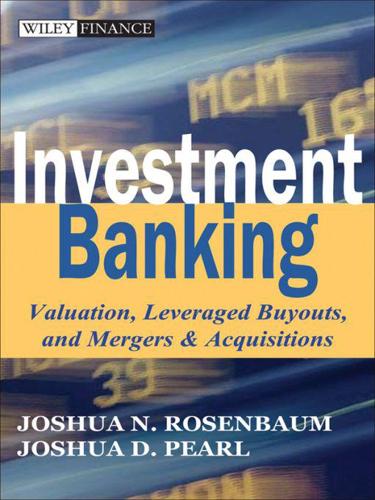
Investment Banking: Valuation, Leveraged Buyouts, and Mergers and Acquisitions
by
Joshua Rosenbaum
,
Joshua Pearl
and
Joseph R. Perella
Published 18 May 2009
The straight-line depreciation method assumes a uniform depreciation expense over the estimated useful life of an asset. For example, an asset purchased for $100 million that is determined to have a ten-year useful life would be assumed to have an annual depreciation expense of $10 million per year for ten years. Most other depreciation methods fall under the category of accelerated depreciation, which assumes that an asset loses most of its value in the early years of its life (i.e., the asset is depreciated on an accelerated schedule allowing for greater deductions earlier on). For DCF modeling purposes, depreciation is often projected as a percentage of sales or capex based on historical levels as it is directly related to a company’s capital spending, which, in turn, tends to support top line growth.
…
New York: Oxford University Press, 2003. Yasuda, Ayako. “Do Bank Relationships Affect the Firm’s Underwriter Choice in the Corporate-Bond Underwriting Market?” Journal of Finance 60 (2005): 1259-1292. Index A ability to pay ABL facility. See asset based lending facility accelerated depreciation accountants accounting accounts payable accounts receivable accretion/(dilution) analysis accretive accrued liabilities acquisition currency acquisition-driven growth acquisition financing adjusted income statement adjustments balance sheet capital expenditures capital structure changes management projections mid-year convention non-recurring items purchase price and financing structure recent events synergies year-end discounting administrative agent administrative agent fee advisor affiliate affirmative covenants Alacra all-cash transaction amortization acquisition-related intangible assets, of deferred financing fees, of term loan schedule, for term loans .

23 Things They Don't Tell You About Capitalism
by
Ha-Joon Chang
Published 1 Jan 2010
So the raw materials had to be imported from countries such as Australia, Canada and the US – all of them five or six thousand miles away – thereby significantly adding to the cost of production. No wonder the Korean government was finding it difficult to convince potential foreign donors and lenders of its plan, even though it proposed to subsidize the steel mill left, right and centre – free infrastructure (ports, roads, railroads), tax breaks, accelerated depreciation of its capital equipment (so that tax liabilities would be minimized in the early years), reduced utility rates, and what not. While the negotiations with potential donors – such as the World Bank and the governments of the US, UK, West Germany, France and Italy – were going on, the Korean government did things to make the project look even less appealing.
…
It has encouraged excessive emphasis on, for example, formal education, whose impact on economic growth turns out to be highly complex and uncertain, and on the spread of the internet, whose productivity impacts are actually quite modest. Investment in ‘boring’ things like machinery, infrastructure and worker training needs to be encouraged through appropriate changes in tax rules (e.g., accelerated depreciation for machinery), subsidies (e.g., to worker training) or public investment (e.g., redirection into infrastructural development). Industrial policy needs to be redesigned to promote key manufacturing sectors with high scope for productivity growth. Sixth: we need to strike a better balance between finance and ‘real’ activities.

Wealth and Poverty: A New Edition for the Twenty-First Century
by
George Gilder
Published 30 Apr 1981
Heavy investment credits and other subsidies for R&D merely compensate for the necessary market failure to measure broad social returns. The abolition of capital-gains taxes on stocks would further enhance the climate for creativity and correct the current bias in favor of housing, largely exempt from these and other levies. Many of the favored programs to promote capital formation, such as accelerated depreciation, do little for the struggling business with a new product and little profits. The deductibility of inflated interest only helps companies heavily in debt, and loans are least available for risky ventures. Bankers must always exaggerate the possible risk factor, since they can suffer from it, but only the equity owner benefits heavily from success.
…
In Great Britain the discovery of North Sea oil has been called a “curse in disguise” because it allowed that country to continue financing its parasite leviathans throughout the 1970s and even to endow new nationalized firms such as the now-defunct Inmos, which was a hopeless laggard in the computer industry, as well as virtual government creatures like the failed DeLorean Autos, for which Britain outbid lucky Puerto Rico for the right to lavish immense subsidies on the firm and to deplete the national economy in order to “create” a few jobs and destroy many more. Even when governments give more modest help to independent business, they often act in ways that favor established firms against potential rivals. Tariffs, import quotas, accelerated depreciation, and other tax and trade policies all are most useful to settled firms, with long established product lines to protect, equipment to depreciate, and profits to offset. These policies, often hailed for being targeted to achieve specific social benefits, generally promote the enlargement and reproduction of the existing capital stock: the factories and machines used to build and sell more automobiles, color televisions, dishwashers, hairdryers, chemical fertilizers, and insecticides—all estimable products but all also items of declining relevance to the rising problems of a changing national predicament.
…
“Inflation Is Too Important to Leave to the Economists.” Forbes, November 15, 1976. Wildavsky, Aaron. “Does Planning Work?” Public Interest 24 (Summer 1971 Wrigley, E. A. Population and History. New York: McGraw-Hill, Inc., 1969. INDEX A AAA securities rating absenteeism accelerated depreciation Addis Ababa Affirmative action for black women in civil service credentialism and equal-rights organizations and expansion of ghetto employment and implicit racism of The Affluent Society (John Kenneth Galbraith) After America: Get Ready for Armageddon (Mark Steyn) aggregate demand aggregate economics aggregation, paradox of aggregative fallacy aggressiveness Aid to Families with Dependent Children (AFDC) sociological analyses of welfare culture and Albany (New York) Alsop, Reese F.

Schaum's Outline of Bookkeeping and Accounting, Fourth Edition (Schaum's Outlines)
by
Joel Lerner
and
Rajul Gokarn
Published 13 Sep 2009
If the asset is expected to generate high income in its early years, the double-declining balance method should be used because it will gen erate greater depreciation expense in its earlier years, as it can be matched with the early period’s higher revenues. Like the sum-of-the-years’-digits, this accelerated depreciation method reduces tax liability in the early years, making more cash available for the asset’s purchase. Summary 1. The market value of a fixed asset at the end of its service is known as a ______. 2. The uniform distribution of depreciation over the life of the asset is known as the _______ method. 3.

Greater: Britain After the Storm
by
Penny Mordaunt
and
Chris Lewis
Published 19 May 2021
This is equivalent to the combined total of aid spent there each year.17 According to the report: These companies avoided taxes by employing a variety of legal tax breaks. Accelerated depreciation allows companies to write off the cost of their investments much faster than these investments wear out. This break accounted for hundreds of millions in tax write-offs. Chevron alone, for example, reported $290 million in accelerated depreciation and Halliburton reported $320 million. The report was damning, noting that stock options were providing a dubious tax break that allowed several corporations to write off expenses far in excess of the cost they reported to investors.
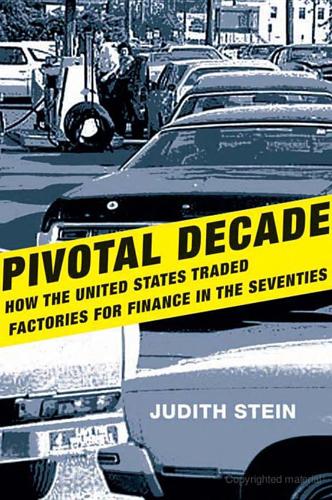
Pivotal Decade: How the United States Traded Factories for Finance in the Seventies
by
Judith Stein
Published 30 Apr 2010
A Canadian attempt to develop Nova Scotia illustrated the problem. In 1974 the United States imposed a countervailing duty on Michelin tire exports from Canada on the grounds that two new plants in Nova Scotia were heavily subsidized in 1969 and 1971. No one disputed that they were. The federal government provided a $16-million grant and an accelerated depreciation allowance for investment; the province of Nova Scotia granted a $50-million loan and spent $7.6 million for training; the local government donated the plant sites and reduced the property tax rate. No one disputed that the plants were built with the understanding that 80 percent of their output would be exported to the United States.73 The Canadians stressed that their action was motivated by domestic goals; the United States said that, whatever the motivation, the assistance was a bounty that had adverse international trade effects.
…
Only 19 percent preferred lower prices, if unemployment was the result.147 So the president’s advisers put together a new auto program. It created a tripartite committee and offered aid to communities affected by plant closings, federal retraining, loan guarantees for auto dealers (including minority dealers under the Small Business Administration), eased emission standards, and accelerated depreciation deductions. The committee addressed adjustment to closures, not investment or planning initiatives. Having failed to get the president to act, the UAW and Ford filed an escape clause suit in June. The U.S. International Trade Commission (ITC) would determine whether Japanese imports constituted the principal cause of injury to the domestic industry.148 The decision was announced on November 10, after the presidential election, and, despite earlier predictions, it denied relief by a vote of 3–2.149 ITC chair Bill Alberger, who himself drove a Toyota, acknowledged that “increased imports made it difficult for U.S. firms to conduct the transition to smaller vehicles, thus impairing their competitiveness and inhibiting a faster shift to meet changing demands.
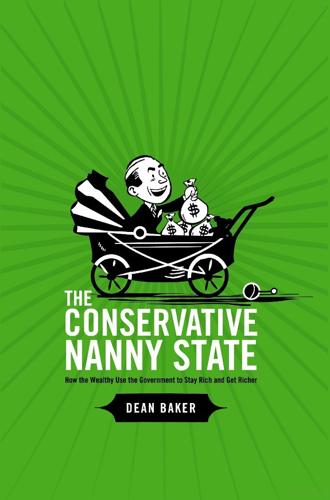
The Conservative Nanny State: How the Wealthy Use the Government to Stay Rich and Get Richer
by
Dean Baker
Published 15 Jul 2006
In addition, various levels of government often apply affirmative action standards for small businesses, setting aside a certain portion of their contracts for businesses that are below a specific size.5 The government provides tax benefits to small businesses through two mechanisms, one of them legal, and the other not quite legal. The first mechanism is a large set of tax breaks that are explicitly designed to help small businesses. Effectively, the government applies a different set of tax rules based on the size of the business. Small business owners are allowed to take many deductions, such as accelerated depreciation on capital equipment, that are not generally available to larger businesses. If a small business is incorporated – most small businesses are not incorporated so that their profits are simply taxed as the income of business owner(s) – they generally pay tax at a lower rate than larger businesses.
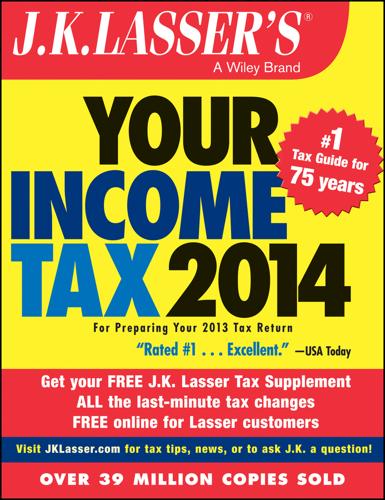
J.K. Lasser's Your Income Tax 2014
by
J. K. Lasser
Published 5 Oct 2013
Depreciation on property received as a gift If the property is depreciable (Chapter 42), your basis for computing depreciation deductions is the donor’s adjusted basis (5.20), plus all or part of the gift tax paid by the donors as previously discussed. To figure gain or loss when you sell the property, you must adjust basis for depreciation you claimed and make other adjustments required for the period you hold the property (5.20). If accelerated depreciation is claimed and you sell at a gain, you are subject to the ordinary income recapture rules (44.1). EXAMPLES 1. Assume that in 2008 you received a gift of stock from your father that you sold in 2013. His adjusted basis was $1,000. The basis you use to determine gain or loss depends on whether the fair market value of the stock on the date of the gift equalled or exceeded your father’s $1,000 adjusted basis.
…
Chapter 23 Alternative Minimum Tax (AMT) The purpose of AMT is to effectively take back some of the tax breaks allowed for regular tax purposes. The AMT is an additional tax that you may owe if for regular tax purposes you claimed: Itemized deductions, such as taxes, interest on home equity loans used for nonresidential purposes, medical expenses, and miscellaneous job and investment expenses. Certain tax-exempt interest, accelerated depreciation, and incentive stock option benefits. A substantial number of exemptions for dependents. There are no specific tests to determine whether or not you are liable for AMT. You must first figure your regular income tax and then see whether tax benefit items must be added back to taxable income to figure alternative minimum taxable income, on which the AMT is figured.
…
The items that most commonly get added back to income when calculating AMTI are state and local taxes and miscellaneous itemized deductions. Items subject to AMT: Check: 1. Personal exemptions 2. Standard deduction 3. Itemized deductions for taxes, miscellaneous expenses, and medical expenses 4. Interest on home equity debt used for nonresidential purposes 5. Accelerated depreciation in excess of straight line 6. Income from the exercise of incentive stock options 7. Tax-exempt interest from private activity bonds 8. Intangible drilling costs 9. Depletion 10. Circulation expenses 11. Mining exploration and development costs 12. Research and experimental costs 13.
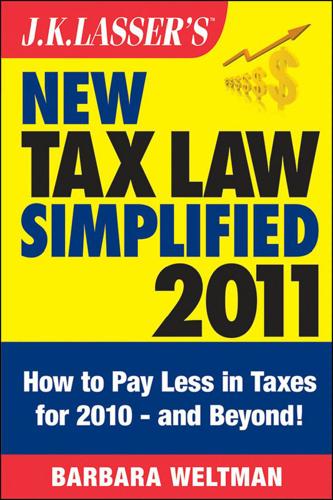
J.K. Lasser's New Tax Law Simplified: Tax Relief From the HIRE Act, Health Care Reform, and More
by
Barbara Weltman
Published 30 Nov 2010
Remember that the standard mileage rate replaces write-offs for depreciation (or lease costs on leased cars), gas, oil, repairs, licenses, and insurance. If you use the standard mileage rate in the first year, you can switch to the actual expense method in a subsequent year—but you are limited to claiming straight-line depreciation if you own the car (no accelerated depreciation is permitted). Again, if you use the actual expense method in the first year, you cannot later switch to the standard mileage rate. P1: OTA/XYZ P2: ABC c07 JWBT413/Weltman October 14, 2010 15:18 Printer Name: Yet to Come LEASED CARS The choice of which method to select depends on a couple of factors: • Records for actual costs.
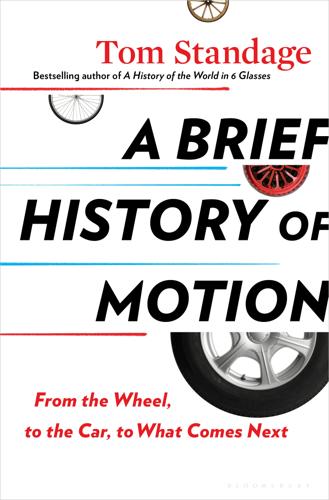
A Brief History of Motion: From the Wheel, to the Car, to What Comes Next
by
Tom Standage
Published 16 Aug 2021
SEE YOU AT THE MALL Larger, formally planned shopping centers, often anchored around department stores, had existed since at least the 1920s—the Country Club Plaza, which opened in Kansas City in 1923, was an early example—and a handful of similar developments appeared in the 1930s and 1940s. But a change to America’s tax rules known as accelerated depreciation, introduced in 1954 in an effort to boost investment in manufacturing, had the side effect of triggering a surge in construction of large-scale shopping centers. More generous deductions for depreciation enabled property developers to recoup the cost of their investments within five years rather than forty, by allowing even a profitable development to be counted as loss making for tax purposes.
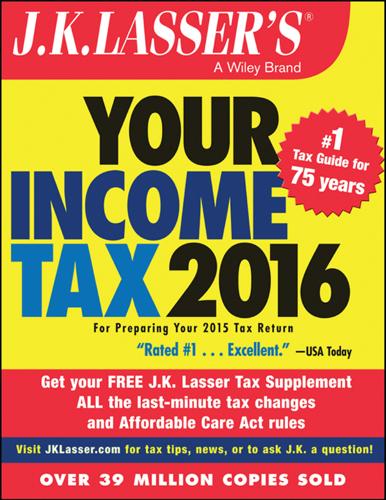
J.K. Lasser's Your Income Tax 2016: For Preparing Your 2015 Tax Return
by
J. K. Lasser Institute
Published 19 Oct 2015
If the property is depreciable (Chapter 42), your basis for computing depreciation deductions is the donor’s adjusted basis (5.20), plus all or part of the gift tax paid by the donors as previously discussed. To figure gain or loss when you sell the property, you must adjust basis for depreciation you claimed and make other adjustments required for the period you hold the property (5.20). If accelerated depreciation is claimed and you sell at a gain, you are subject to the ordinary income recapture rules (44.1). EXAMPLES Assume that in 2008 you received a gift of stock from your father that you sold in 2015. His adjusted basis was $1,000. The basis you use to determine gain or loss depends on whether the fair market value of the stock on the date of the gift equalled or exceeded your father’s $1,000 adjusted basis.
…
Chapter 23 Alternative Minimum Tax (AMT) The purpose of AMT is to effectively take back some of the tax breaks allowed for regular tax purposes. The AMT is an additional tax that you may owe if for regular tax purposes you claimed: Itemized deductions, such as taxes, interest on home equity loans used for nonresidential purposes, medical expenses, and miscellaneous job and investment expenses. Certain tax-exempt interest, accelerated depreciation, and incentive stock option benefits. A substantial number of exemptions for dependents. There are no specific tests to determine whether or not you are liable for AMT. You must first figure your regular income tax and then see whether tax benefit items must be added back to taxable income to figure alternative minimum taxable income, on which the AMT is figured.
…
The items that most commonly get added back to income when calculating AMTI are state and local taxes and miscellaneous itemized deductions. Items subject to AMT: Check:√ 1. Personal exemptions □ 2. Standard deduction □ 3. Itemized deductions for taxes, miscellaneous expenses, and medical expenses □ 4. Interest on home equity debt used for nonresidential purposes □ 5. Accelerated depreciation in excess of straight line □ 6. Income from the exercise of incentive stock options □ 7. Tax-exempt interest from private activity bonds □ 8. Intangible drilling costs □ 9. Depletion □ 10. Circulation expenses □ 11. Mining exploration and development costs □ 12. Research and experimental costs □ 13.

J.K. Lasser's Your Income Tax 2022: For Preparing Your 2021 Tax Return
by
J. K. Lasser Institute
Published 21 Dec 2021
If the property is depreciable (Chapter 42), your basis for computing depreciation deductions is the donor's adjusted basis (5.20), plus all or part of the gift tax paid by the donors as previously discussed. To figure gain or loss when you sell the property, you must adjust basis for depreciation you claimed and make other adjustments required for the period you hold the property (5.20). If accelerated depreciation is claimed and you sell at a gain, you are subject to the ordinary income recapture rules (44.1). Basis of Inherited Property Your basis for property inherited from someone who died before or after 2010 is generally the fair market value of the property on the date of the decedent's death.
…
CHAPTER 23 Alternative Minimum Tax (AMT) The purpose of AMT is to effectively take back some of the tax breaks allowed for regular tax purposes. The AMT is an additional tax that you may owe if for regular tax purposes you claimed: Itemized deductions for taxes or investment expenses. Certain tax-exempt interest, accelerated depreciation, and incentive stock option benefits. There are no specific tests to determine whether or not you are liable for AMT. You must first figure your regular income tax and then see whether tax benefit items must be added back to taxable income to figure alternative minimum taxable income, on which the AMT is figured.
…
The item that most commonly gets added back to income when calculating AMTI is state and local taxes. See 23.2 for details on the AMT adjustments and preference items. Items subject to AMT: Check: √ 1. Standard deduction ❏ 2. Itemized deductions for taxes and investment interest ❏ 3. Accelerated depreciation in excess of straight line ❏ 4. Income from the exercise of incentive stock options ❏ 5. Tax-exempt interest from private activity bonds ❏ 6. Intangible drilling costs ❏ 7. Depletion ❏ 8. Circulation expenses ❏ 9. Mining exploration and development costs ❏ 10. Research and experimental costs ❏ 11.

Corporate Finance: Theory and Practice
by
Pierre Vernimmen
,
Pascal Quiry
,
Maurizio Dallocchio
,
Yann le Fur
and
Antonio Salvi
Published 16 Oct 2017
Prior to consolidation, the consolidating company needs to restate the accounts of the to-be-consolidated companies. The consolidating company applies the same valuation principles and makes adjustments for the impact of the valuation differences that are justified on tax grounds, e.g. tax-regulated provisions, accelerated depreciation for tax purposes and so on. 2. Eliminating intra-group transactions Consolidation entails more than the mere aggregation of accounts. Before the consolidation process as such can begin, intra-group transactions and their impact on net income have to be eliminated from the accounts of both the parent company and its consolidated companies.
…
However, tax optimisation should not merely endeavour to reduce costs if this leads to higher risks. Financial managers must think in terms of value. They must carefully examine the impact each financial decision will have on taxes. The main issues we shall be addressing in the subsequent chapters are: taxation of debt vs. equity; taxation of accelerated depreciation and one-off write-downs; taxation of capital gains vs. ordinary income (dividends or coupons); taxation of financial income and expenses; tax groups; usable or unusable tax-loss carryforwards; international organisation of a group: local tax rates, capacity to bring back dividends tax-free.
…
TAX RATES IN VARIOUS COUNTRIES (%) Country On dividends On capital gains On interest On corporate earnings France 0%–42.5% 0%–60.5% 0%–60.5% 34.4% Germany 26.4%–28.0% 26.4%–28.0% 26.4%–28.0% 29.65% India 0% 0% or 10% 0%–30% 34.61% Italy 26.0% 26.0% 12.5% or 26.0% 31.4% Morocco 10.0% 20.0% 20.0% 10.0%–31.0% Netherlands 30.0% 30.0% 30.0% 25% Spain 19.0%–23.0% 21.0% 19.0%–23.0% 25.0% Switzerland 19.0%–41.0% 0.0% 19.0–41.0% 12.0%–24.0% Tunisia 5.0% 0.0% 10.0% 30.0% UK 7.5%–38.1% 18.0% or 28.0% 20.0%, 40.0% or 45.0% 20.0% US 0.0%–20.0% 0.0%–20.0% 39.6% (income tax) 40.0% Bear in mind, too, that companies do not always use the tax advantages of debt since there are other options, such as accelerated depreciation, provisions, etc. 4. Limits to the deductibility of interest and notional interest, the third limit In a certain number of jurisdictions, governments have introduced mechanisms to rebalance taxation of revenues from capital gains and debt. These measures can take the form of a limitation of the deductibility of interest.
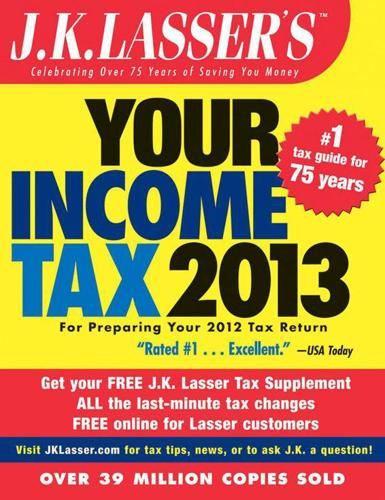
J.K. Lasser's Your Income Tax
by
J K Lasser Institute
Published 30 Oct 2012
If the property is depreciable (Chapter 42), your basis for computing depreciation deductions is the donor’s adjusted basis (5.20), plus all or part of the gift tax paid by the donors as previously discussed. To figure gain or loss when you sell the property, you must adjust basis for depreciation you claimed and make other adjustments required for the period you hold the property (5.20). If accelerated depreciation is claimed and you sell at a gain, you are subject to the ordinary income recapture rules (44.1). EXAMPLE 1. Assume that in 2008 you received a gift of stock from your father that you sold in 2012. His adjusted basis was $1,000. The basis you use to determine gain or loss depends on whether the fair market value of the stock on the date of the gift equalled or exceeded your father’s $1,000 adjusted basis.
…
Chapter 23 Alternative Minimum Tax (AMT) The purpose of AMT is to effectively take back some of the tax breaks allowed for regular tax purposes. The AMT is an additional tax that you may owe if for regular tax purposes you claimed: Itemized deductions, such as taxes, interest on home equity loans used for nonresidential purposes, medical expenses, and miscellaneous job and investment expenses. Certain tax-exempt interest, accelerated depreciation, and incentive stock option benefits. A substantial number of exemptions for dependents. There are no specific tests to determine whether or not you are liable for AMT. You must first figure your regular income tax and then see whether tax benefit items must be added back to taxable income to figure alternative minimum taxable income, on which the AMT is figured.
…
The items that most commonly get added back to income when calculating AMTI are state and local taxes and miscellaneous itemized deductions. Items subject to AMT: Check: 1. Personal exemptions 2. Standard deduction 3. Itemized deductions for taxes, miscellaneous expenses, and medical expenses 4. Interest on home equity debt used for nonresidential purposes 5. Accelerated depreciation in excess of straight line 6. Income from the exercise of incentive stock options 7. Tax-exempt interest from private activity bonds 8. Intangible drilling costs 9. Depletion 10. Circulation expenses 11. Mining exploration and development costs 12. Research and experimental costs 13.
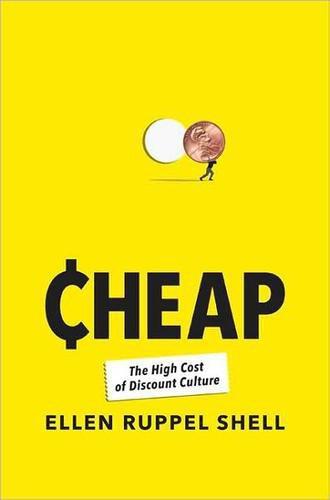
Cheap: The High Cost of Discount Culture
by
Ellen Ruppel Shell
Published 2 Jul 2009
(New York: Routledge, 2004), 127. 91 real estate is cheap and the tax incentives sweet: See, for example, Thomas W. Hanch ett, “U.S. Tax Policy and the Shopping Center Boom of the 1950s and 1960s,” American Historical Review (October 1996): 1082-1110. Hanchchett traces the explosion in shopping malls to a loophole in the tax code that allowed for “accelerated depreciation,” which transformed real estate development into a lucrative tax shelter for developers. 91 avoid angering full-price retailers: Parke Chapman, “Bargain Hunters Keep Outlet Malls Humming,” National Retail Estate Investor 45, no. 4 (2003): 15. 92 “sky and landscape seemed to dance”: Zola modeled his fictional store after Le Bon Marche in Paris.

The Investment Checklist: The Art of In-Depth Research
by
Michael Shearn
Published 8 Nov 2011
The time to replace an asset depends on the asset and the age of that asset: For example, a plane that is utilized more than another will have to be replaced sooner. As assets age, maintenance capital expenditures typically increase. In order to get a rough estimate of the average age of assets, calculate the ratio of net property, plant, and equipment (PP&E) to gross property, plant, and equipment (note: If a business uses accelerated depreciation, adjust it to straight-line depreciation). For instance, in 2009, the ratio of net assets to gross assets at cement maker CEMEX was 61 percent, which means that the assets are getting close to their half life. This means that CEMEX potentially faces higher maintenance capital expenditures in the future to upgrade many of its older plants.

The Great Divide: Unequal Societies and What We Can Do About Them
by
Joseph E. Stiglitz
Published 15 Mar 2015
But interest payments are tax deductible—which means that to the extent that investment is debt-financed, the cost of capital and returns are both changed commensurately, with no adverse effect on investment. And with the low rate of taxation on capital gains, returns on equity are treated even more favorably. Still more benefits accrue from other details of the tax code, such as accelerated depreciation and the tax treatment of research and development expenditures. It is time the international community faced the reality: we have an unmanageable, unfair, distortionary global tax regime. It is a tax system that is pivotal in creating the increasing inequality that marks most advanced countries today—with America standing out in the forefront and the UK not far behind.

Happy City: Transforming Our Lives Through Urban Design
by
Charles Montgomery
Published 12 Nov 2013
The lingering incentives for sprawl are too numerous to name, but here are a few glaring examples: First there is the “traffic impact exaction,” a standard fee that municipalities charge developers who create new density, based on the superficial assumption that density creates more automobile traffic and thus more costs. It backfires horribly because it actually punishes the kinds of mixed-use development that can support transit, and it spreads new development farther and farther across the landscape, creating even more traffic. Then there is the U.S. government’s accelerated depreciation tax deduction, which gives developers a generous tax break for creating new buildings rather than renovating or reusing old ones. It effectively rewards Walmart for abandoning older stores and building in regional power centers far from the communities they first promised to serve. Another misguided gift to sprawl is the home mortgage interest tax deduction.

A Game as Old as Empire: The Secret World of Economic Hit Men and the Web of Global Corruption
by
Steven Hiatt; John Perkins
Published 1 Jan 2006
Incentives for foreign corporations included: • Permission for 100 percent foreign ownership • Permission to pay a wage lower than Manila’s minimum wage • Tax exemptions • Low rents for land and low charges for water • Government financing of infrastructure and factory buildings, which could be rented or purchased at a low price • Accelerated depreciation of fixed assets6 These projects did not come cheap for the Philippines. One site alone, the model Bataan EPZ, cost $150 million to develop, including a dam and water-treatment plant. Overall, the government spent billions of borrowed money on energy, transportation, communications, water, and construction to entice foreign corporations.7 Companies that made hefty profits in these EPZs included Texas Instruments, Fairchild, Motorola, and Mattel.8 While the cost of export-oriented development was high for the Philippines, the commitment was low for the multinationals.

Taming the Sun: Innovations to Harness Solar Energy and Power the Planet
by
Varun Sivaram
Published 2 Mar 2018
In 2015, the federal government extended this credit through 2020, at which point the tax credit steps down to 10 percent over the next two years. As a result, the U.S. Treasury forecasts that the federal government will spend over $2 billion per year subsidizing solar power. Another federal tax incentive, which allows solar project owners to apply an accelerated depreciation schedule, could cost another $200 million annually.32 These tax incentives promote the wrong things, however. They almost exclusively benefit mature technologies—mostly silicon solar PV panels. Given the choice between an emerging, innovative technology and a commercially established one, both of which are equally eligible for the same tax credit, an investor will prudently choose the established one, even if the emerging technology might be cheaper and more efficient when produced at scale.33 A better approach would be to design incentives that fell in value as a technology got cheaper, weaning it off subsidies that it would not need and focusing support on the deployment of newer technologies that need an early boost.
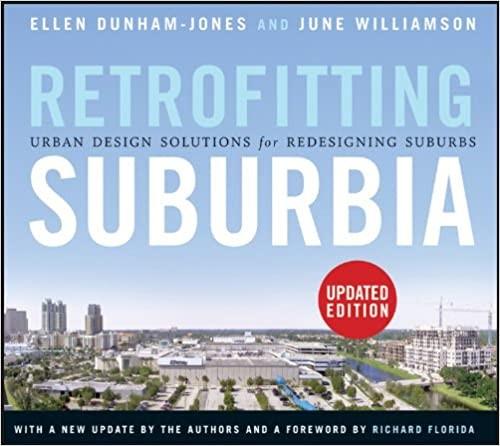
Retrofitting Suburbia, Updated Edition: Urban Design Solutions for Redesigning Suburbs
by
Ellen Dunham-Jones
and
June Williamson
Published 23 Mar 2011
By 1972, the number of shopping centers had doubled to 13, 174.10 Figure 4–4 This map by Brenda Case Scheer of a portion of Colerain Avenue outside Cincinnati, Ohio, shows the larger lots typical of commercial strips developed in the sixties and seventies and the layering of retail activity that results, leading to a greater perception of disorder. The increase can be attributed to the postwar economic boom that the country enjoyed through the 1960s, the 1954 change to the tax code that allowed accelerated depreciation for income-producing buildings, and the suburban development boom (especially in mall construction) that followed the new highways and bypasses built as part of the interstate highway system begun in 1956. New residential subdivisions would be visible from our drive, but most would be set enough distance back from the road to install a retail strip and/or an apartment complex as a buffer between the road and the single-family houses.

Good Economics for Hard Times: Better Answers to Our Biggest Problems
by
Abhijit V. Banerjee
and
Esther Duflo
Published 12 Nov 2019
One reason is the bias in the US tax code, which taxes labor at a higher rate than capital. Employers have to pay payroll taxes (used to finance social security and Medicare) on labor, but not on robots. They get an immediate tax rebate when they invest in the robot, since they can often claim “accelerated depreciation” for a capital expenditure, and if they finance it with a loan they also get to deduct the interest from their earnings. This tax advantage gives employers an incentive to automate, even if it would otherwise cost less to keep the workers.18 Moreover, even without subsidies from the tax code, the many frictions in the labor market may make managers dream of factories without workers.

Money: 5,000 Years of Debt and Power
by
Michel Aglietta
Published 23 Oct 2018
This law is intriguing, because according to this law the price of gold and its rate of increase tend towards infinity in a finite time. However, this is not a regular process. That means that the parameters of this function estimated across the past do not allow us to calculate the future date of the destruction of the money economy! Indeed, the eras of accelerated depreciation are interrupted by eras of monetary stability. Order and disorder seem to follow one after the other. The eras of order stop the monetary bubble’s expansion and push back the end date. Nonetheless, the monetary crises that we will study in the third part of this volume, degenerating into hyperinflation, teach us that monies can be destroyed in local contexts, and thus that monetary sovereignty is mortal.

The Quest: Energy, Security, and the Remaking of the Modern World
by
Daniel Yergin
Published 14 May 2011
The federal government provided tax credits for wind power, and so did the state of California, even for projects that generated little or no electricity. Indeed, the person who really made the difference, and did as much as any single person to launch wind power, was California’s Governor Jerry Brown. Developers also got accelerated depreciation on their wind assets, and all this made the investment almost risk-free. As a kicker, California wind developers would be paid for any electricity sold into the grid as the state’s generous PURPA “avoided” rates for renewable electricity. The result was California’s extraordinary wind rush.